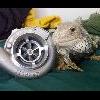Rb20 --> Rb24 Head Question
Announcements
-
Similar Content
-
Latest Posts
-
So, it went to Unigroup for a run in and tune on Friday, everything went (generally) well. In terms of fixes, the engine was good and there were no leaks. It needed plugs (I hadn't checked them because the coil pack cover was on a new engine and I couldn't imagine they weren't new.....but turns out the temporary plugs to just keep it sealed up were in there.....new plugs gapped to 0.8 and it was fine from there. Also, there was a little preload on the clutch slave which caused some slip. I haven't had the box off so I don't know what the clutch looks like; my guess it is brand new and the pedal had not been adjusted....backed that off a bit and it held fine. Last thing will have Dose crying....the idle especially when cold is a bit difficult between the cams, forward plenum, atmo blow off valve and an 80s air management system. It is fine when hot but a little uneven when cold, will see if I can sort or at least improve that one cold morning. Other than that, tuning went fine. It made 245 but was pulled back to 227 which 2 opportunities to improve in future. 1. The factory CAS is not great and was jumping around at high RPM, so Mark took 2 degrees out up top (that is why it stops making power and lost 20kw). Very safe this way and the extra power is available but will require a more modern ECU and better cam (or even better crank) sensor 2. The 2871 in factory housings is very big for a low mount, and the internal wastegate is too small, so it was creeping from mid range all the way to redline....the duty cycle on the boost controller is turned down a little for safety. That is much harder to fix, it would need a large external gate and that would require a whole bunch of other changes, so it will go as it is for now. It feels nice and healthy and safe, so should be good for about a billion laps like this.
-
what sort of caliper are they? If they are a slider and you gave everything a good clean, you might need to regrease the pins. My guess though is they will come good after some abuse as suggested above
-
I don't know what you should expect with an LS, but the oil pressure sounds terrible, sorry. As for the brakes, you can get fade from the pads not just the fluid, although generally that feels like a wooden block not doing anything while fluid feels like an oh shit there is no pedal so you can generally tell. What pads are you running front and rear?
-
Went over my datalogs on a whim and noticed a worrying combination of events. High RPM High Temperature Low Oil Pressure Knock Retard I bought some 10w-60 because I actually think this will be better going forward given track temp is 125C and 10-40 will actually be thinner in those environments. I know I had a leak but it's not entirely sure how much pressure loss can be attributed to that. The knock retard does correlate with all of the above. When it's not present oil pressure is higher. And by 'low' I mean at 6800 RPM the oil pressure was recorded as low as ~35psi pretty constantly. Which is obviously very not good. I'm hoping that thicker oil that ISNT LEAKING will result in a bit more pressure when I need it. Also in the last session I got a very spongy break pedal. I bled the lines as the car is on jack stand right now with the wheels off and I noticed... no air in the lines? Maybe the tiniest bit of tiny frothy bubbles for the first 0.1 seconds of bleeding the whole car? The breaks did come back to me after I backed off (and felt fine driving normally). Doesn't appear to be any leaks anywhere that I can see. Any thoughts on that?
-
Solution, run shitter tyres. Let wheel spin be your weak link 😛
-






Recommended Posts
Create an account or sign in to comment
You need to be a member in order to leave a comment
Create an account
Sign up for a new account in our community. It's easy!
Register a new accountSign in
Already have an account? Sign in here.
Sign In Now